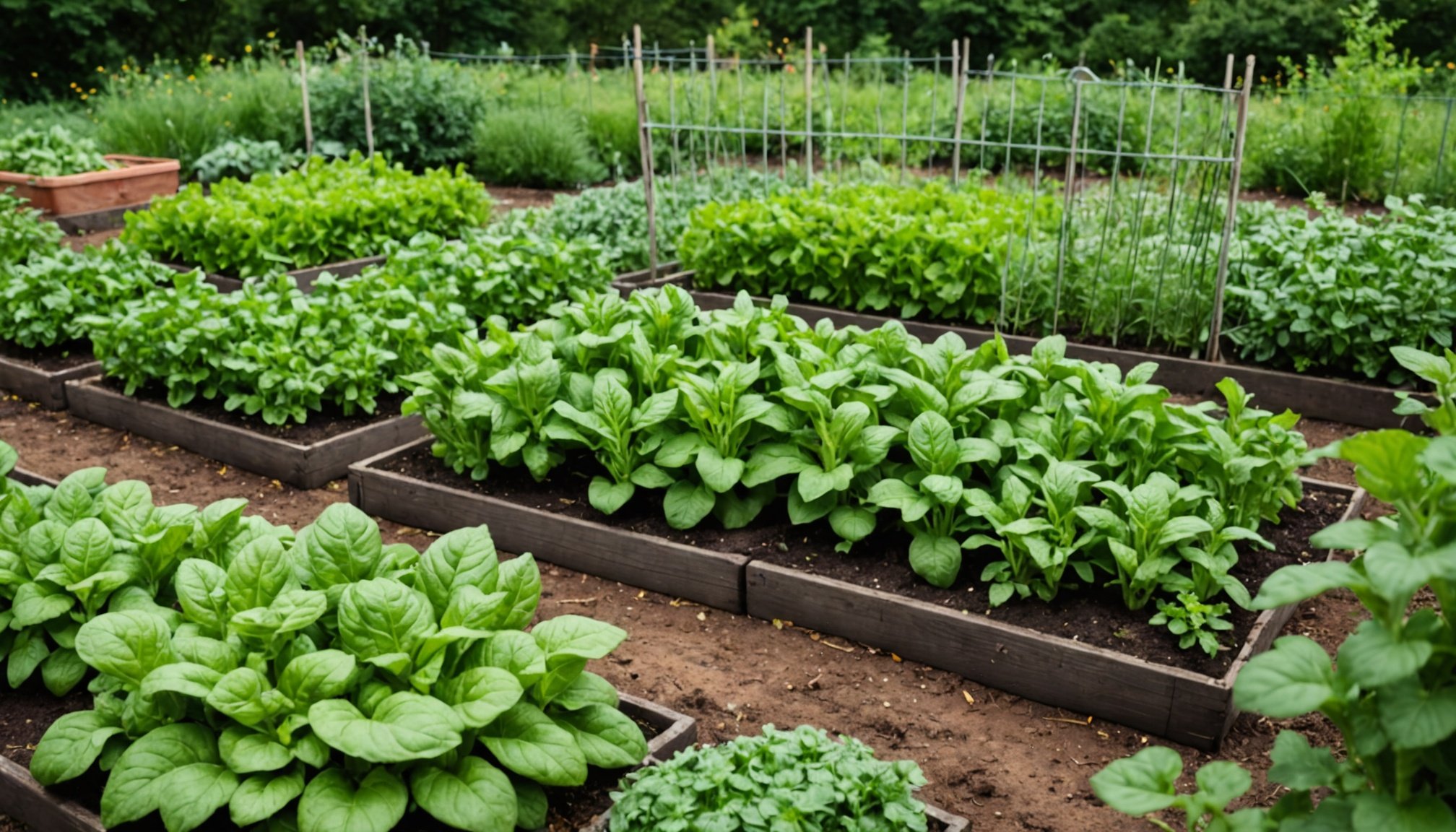Creating a kitchen garden is a rewarding endeavor that not only brings the joy of fresh produce right to your doorstep but also adds a touch of nature to your home. Whether you’re a novice to gardening or a seasoned enthusiast, maintaining a year-round supply of fresh vegetables and herbs is within your reach. By understanding the essential factors, such as soil quality, sunlight, and plant care, you can grow a bountiful harvest throughout the year. In this article, we’ll explore the practical steps and tips needed to cultivate a thriving kitchen garden, enabling you to savor flavorful herbs and vegetables in every season.
Planning Your Year-Round Kitchen Garden
A successful kitchen garden begins with careful planning, ensuring you have the right resources and layout for optimal growth. Start by assessing the available space, whether it’s a small balcony, a spacious backyard, or even a series of windowsills.
Also to see : What are the best resources for learning advanced cooking techniques at home?
Choosing the Right Location
Finding the perfect spot for your kitchen garden is crucial. Ideally, it should receive at least six hours of direct sunlight each day, as most herbs and vegetables thrive in well-lit conditions. Consider the elements: areas protected from strong winds can prevent damage to delicate plants.
Selecting Herbs and Vegetables
Different plants have varying requirements and growth cycles, so it’s essential to choose a combination that caters to your needs and suits your environment. Basil, mint, and rosemary are robust herbs that can be grown indoors, while vegetables like lettuce, cherry tomatoes, and radishes adapt well to container gardening.
Additional reading : How do I choose the right kitchen sink style based on my cooking habits?
Designing Your Garden Layout
Organize your plants based on their sunlight and water needs. Consider implementing a vertical garden to maximize space, especially if you’re working with limited room. Ensure easy access for harvesting and maintenance. Grouping plants with similar needs can streamline your watering and care routine, making it more efficient.
The planning phase sets the foundation for a productive garden, ensuring you have all the elements in place for success.
Soil and Planting Techniques
The quality of soil in your kitchen garden plays a pivotal role in the health and productivity of your plants. Understanding soil types and the best planting techniques can significantly impact your harvest.
Importance of Soil Quality
Rich, well-draining soil forms the backbone of any thriving garden. Opt for a soil mixture high in organic matter to ensure nutrients are readily available. Avoid overly compacted soil, which can hinder root growth and water absorption.
Amendments and Fertilizers
To enhance soil fertility, incorporate organic compost or natural fertilizers. These not only improve soil structure but also provide essential nutrients. Regularly test and amend your soil to maintain its pH balance and nutrient levels.
Effective Planting Techniques
When planting, follow the recommended spacing guidelines to prevent overcrowding. This ensures each plant receives ample sunlight and airflow. Consider using raised beds or containers for better control over soil conditions and drainage.
By prioritizing soil quality and employing effective planting techniques, you lay the groundwork for a healthy, flourishing garden.
Nurturing and Maintaining Your Garden
Consistent care and attention are vital to sustaining the health of your kitchen garden. Through diligent watering, pruning, and monitoring, you can ensure your plants remain robust throughout the year.
Watering Essentials
Watering is a fundamental aspect of plant care. Aim to maintain consistent moisture levels by watering deeply but infrequently to encourage deep root growth. Take care not to overwater, as this can lead to root rot and other issues. Utilize rainwater or collected water to conserve resources and provide natural nutrients to your plants.
Pruning and Harvesting
Regular pruning encourages healthy growth and prevents plants from becoming leggy. As you harvest herbs, snip the leaves just above a set of growing nodes to promote bushier growth. For vegetables, harvest them when ripe to enjoy their optimal flavor and to stimulate further production.
Pest and Disease Management
Monitor your plants regularly for signs of pests or diseases. Employ eco-friendly remedies such as neem oil or insecticidal soap to combat infestations. Encouraging natural predators like ladybugs can also help maintain a balanced ecosystem in your garden.
By nurturing your plants with care and attention, you ensure a healthy, productive kitchen garden all year round.
Adapting to Seasonal Changes
Gardening is an ever-changing activity, influenced by the ebb and flow of the seasons. Adaptability is key in maintaining a year-round kitchen garden, as different plants will thrive in varying conditions.
Understanding Seasonal Growth Cycles
Each season presents unique opportunities and challenges for your garden. Spring and summer are ideal for planting fast-growing herbs like basil and cilantro, while autumn can support crops like kale and spinach that prefer cooler temperatures.
Extending the Growing Season
Implementing techniques such as using cold frames or greenhouses can significantly extend your growing season. These structures trap sunlight, creating warmer conditions conducive to growth even during colder months.
Rotating Crops
Practice crop rotation yearly to prevent soil depletion and reduce the risk of pests and diseases. By alternating the types of plants grown in specific areas, you help maintain soil vitality and improve overall garden health.
Adapting to the seasons enables you to optimize plant growth and maintain a steady supply of fresh herbs and vegetables throughout the year.
In establishing a year-round kitchen garden, you embrace both the art and science of gardening. From strategic planning and soil preparation to nurturing and adapting to seasonal shifts, each step is a vital component of your gardening journey. With dedication and knowledge, you can enjoy a perpetual harvest of fresh herbs and vegetables, enriching your meals and lifestyle. Whether you’re a culinary enthusiast or simply enjoy the tranquility of gardening, maintaining a kitchen garden offers endless rewards and satisfaction.











